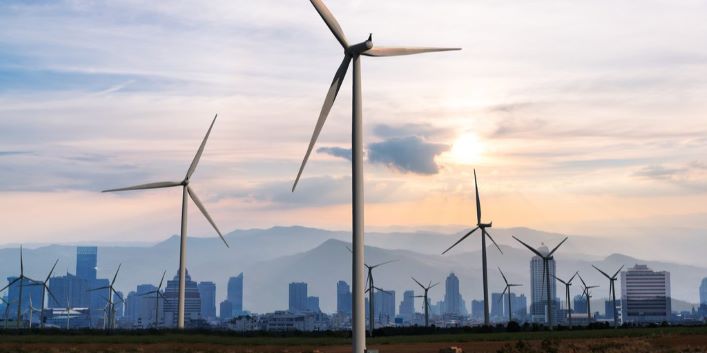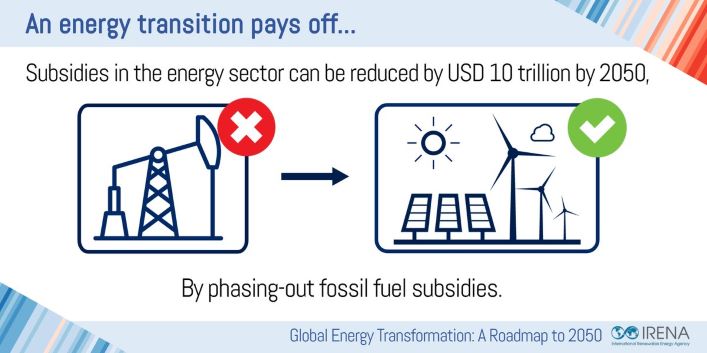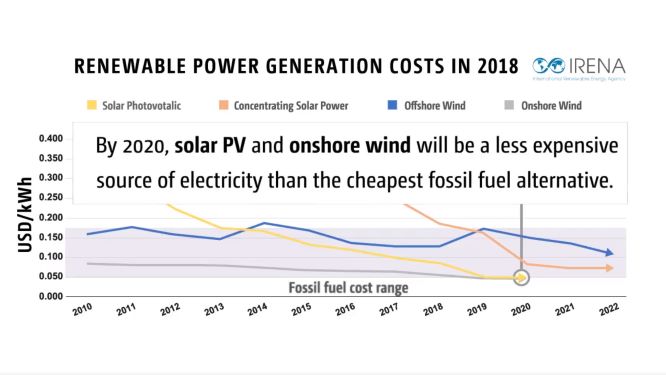

Increased renewable energy use and intensified electrification could help achieve climate goals by 2050, according to an International Renewable Energy Agency (IRENA) study, which describes deployable, cost-effective options for countries to transform the energy sector.
The report titled, ‘Global Energy Transformation: A Roadmap to 2050,’ expands on the IRENA roadmap outlined in the 2018 edition of the report, and describes technology pathways and policy implications to ensure a sustainable energy future. The report pointed out that USD 10 trillion of worth of subsidies can be saved from the energy sector by 2050, by phasing-out fossil fuel subsidies.


The report focuses on two pathways for the global energy system: the “reference case,” which considers countries’ current and planned policies, commitments made in Nationally Determined Contributions (NDCs), and governments’ current projections; and the “REmap case,” which includes the deployment of low-carbon technologies to generate a global energy transformation that meets climate targets and focuses on energy-related carbon dioxide (CO2) emissions.
The report explains that while renewables already make up more than half of newly installed power-generation capacity, their overall share in the energy mix, including power, heat and transport, must increase six-fold to meet climate goals. However, while national commitments under the Paris Agreement on climate change depend on decarbonizing energy, energy-related emissions have increased by 1.3% every year since 2015, and the world’s “carbon budget” could run out within ten years.


The report’s other main findings include:
The report contends that a global energy transformation “makes economic sense,” with the sector expected to have cumulative investments of USD 95 trillion over the period up to 2050, and the types of investments shifting away from the fossil fuel sector towards energy efficiency, renewables and enabling infrastructure.
In addition, the report also revised the investments which are now expected to be 40% lower than what was estimated in the 2018 edition of the analysis as a result of declining renewable power costs, the potential for further cost reductions, and cheaper and more efficient electrification solutions.
The report also notes that the energy transition must be considered within the broader socioeconomic system. The global energy transition, according to the report, could bring increased social and environmental benefits related to GDP, job creation and human welfare, but regions with high dependence on fossil fuel exports and/or weak, non-diversified domestic supply chains will face more challenges. Improving the transition’s socioeconomic footprint will entail incorporating fair and just transition elements, greater ambition in countries and regions and addressing negative impacts on low-income countries.
In addition, the report underscores IRENA’s efforts to integrate the impact of climate damages into its macroeconomic modeling. It explains that macroeconomic performance under both the reference and REmap cases is significantly impacted by climate damages, leading to a global GDP reduction of 15.5% and 13.2%, respectively, by 2050.
To read more click here
1. The mandate for blending Compressed Biogas (CBG) with natural gas has come into effect…
Andhra Pradesh is striving towards greening its energy sector with quite some speed. In a…
With an objective to bolster India’s green energy goals, a Tripartite Agreement has been signed…
The Union MNRE Minister Pralhad Joshi launched the Green Hydrogen Certification Scheme of India (GHCI)…
India’s energy conglomerate Bharat Petroleum Corporation Limited (BPCL) has commissioned a 5MW green hydrogen plant…
In a historical development, the European Space Agency (ESA) has successfully launched its pioneering ‘Biomass’…